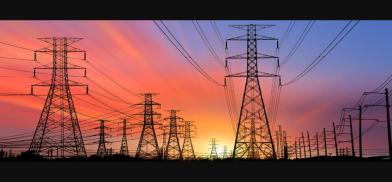Nepal invites bids from Indian companies for sale of surplus electricity
With the commencement of the Upper Tamakoshi hydropower project (456MW) last year, Nepal is expected to have around 600MW-800MW of surplus electricity this year. And, this will grow in the coming years as many small hydro projects are nearing completion

Nepal’s power regulator has invited bids from Indian power companies for the sale of its surplus electricity, a month after New Delhi granted permission to Nepal to sell its $364MW electricity during the upcoming monsoon and winter seasons. The move is yet another step in enhancing the bilateral power trade.
An energy-starved country a decade ago, Nepal has become a net-power surplus country last year, with generation capacity peaking at 2300MW during the winter season. However, limited domestic demand and aging transmission infrastructure had left the country struggling last year to consume its excess power. [Read More]
On Friday, the country’s power regulator, Nepal Electricity Authority (NEA) invited bids from Indian companies to sell its 200MW surplus energy in the upcoming rainy season under the long-term power purchase agreement modality.
With the commencement of the Upper Tamakoshi hydropower project (456MW) last year, Nepal is expected to have around 600MW-800MW of surplus electricity this year. And, this will grow in the coming years as many small hydro projects are nearing completion.
“We invited a tender to sell 200MW out of the approved 364MW. The company make the highest bid will be selected,” Kul Man Ghising, managing director of the NEA, was quoted as saying by The Kathmandu Post. The rest 164MW will be sold through India Energy Exchange on a daily basis.
Significantly, the prospect of sale looks more promising this year, given the high global prices of coal around the world, making hydropower even more lucrative. Until last year, in the absence of a generalized agreement, Nepal had been exporting just 39MW out of its surplus of 500 MW to India.
Significantly, energy cooperation, especially electricity trade, was one of many important issues discussed between the two countries during the recent trip of Nepal Prime Minister Sher Bahadur Deuba. The two countries agreed to enhance energy cooperation under the multilateral BBIN (Bhutan, Bangladesh, India, and Nepal) framework.
Furthermore, by 2023, the country’s electricity production is likely to touch 2500 MW. Domestic demand—peaking at 1700MW last summer—couldn’t be increased beyond a limit until the country improves its transmission infrastructure, covering all parts of the country, and building new high capacity power lines needed for export.
Currently, the country has only one high-capacity transmission line, the Dhalkebar-Muzaffarpur Cross Border Transmission line, which will be used for the export of electricity to India this year. Last week, Kathmandu also sought assistance from India to build another high-power transmission line.
(SAM)








Post a Comment